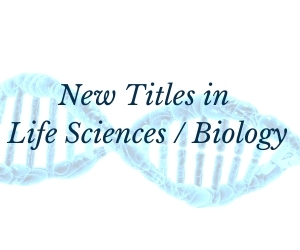System Upgrade on Tue, May 28th, 2024 at 2am (EDT)
Existing users will be able to log into the site and access content. However, E-commerce and registration of new users may not be available for up to 12 hours.For online purchase, please visit us again. Contact us at customercare@wspc.com for any enquiries.
Rapid technological developments have led to increasingly efficient sequencing approaches. Next Generation Sequencing (NGS) is increasingly common and has become cost-effective, generating an explosion of sequenced data that need to be analyzed. The skills required to apply computational analysis to target research on a wide range of applications that include identifying causes of cancer, vaccine design, new antibiotics, drug development, personalized medicine and higher crop yields in agriculture are highly sought after.
This invaluable book provides step-by-step guides to complex topics that make it easy for readers to perform essential analyses from raw sequenced data to answering important biological questions. It is an excellent hands-on material for teachers who conduct courses in bioinformatics and as a reference material for professionals. The chapters are written to be standalone recipes making it suitable for readers who wish to self-learn selected topics. Readers will gain skills necessary to work on sequenced data from NGS platforms and hence making themselves more attractive to employers who need skilled bioinformaticians to handle the deluge of data.
Sample Chapter(s)
Foreword (181 KB)
Chapter 1: Introduction to Next Generation Sequencing Technologies (2,886 KB)
Contents:
- Introduction to Next Generation Sequencing Technologies (Lloyd Low and Martti T Tammi)
- Primer on Linux (Adeel Malik and Muhammad Farhan Sjaugi)
- Inspection of Sequence Quality (Kwong Qi Bin, Ong Ai Ling and Martti T Tammi)
- Alignment of Sequenced Reads (Akzam Saidin)
- Establish a Research Workflow (Joel Low Zi-Bin and Heng Huey Ying)
- De novo Assembly of a Genome (Joel Low Zi-Bin and Martti T Tammi)
- Exome Sequencing (Setia Pramana, Kwong Qi Bin, Heng Huey Ying, Nuha Hassim and Ong Ai Ling)
- Transcriptomics (Akzam Saidin)
- Metagenomics (Sim Chun Hock)
- Applications of NGS Data (Teh Chee-Keng, Ong Ai-Ling and Kwong Qi-Bin)
Readership: It is a necessary companion for undergraduates, graduate students, researchers and anyone interested in the exponentially growing field of bioinformatics.
























